 Maybe you’re not a GPS guy. Some of you prefer obtaining your distances from laser rangefinders instead of their GPS-based counterparts. GPS units in the past have had issues with satellite acquisition times, which can lead to frustration for you, the group you’re playing with, and potentially groups behind you, whereas the laser rangefinder is point, shoot, and done!
Maybe you’re not a GPS guy. Some of you prefer obtaining your distances from laser rangefinders instead of their GPS-based counterparts. GPS units in the past have had issues with satellite acquisition times, which can lead to frustration for you, the group you’re playing with, and potentially groups behind you, whereas the laser rangefinder is point, shoot, and done!
If the laser rangefinders are more to your liking, then hopefully you’ve considered Leupold’s offerings. If you haven’t, maybe you should check them out. For starters, we’ve reviewed previous models from Leupold, and even given a few rangefinders away! Leupold’s optical systems can be found in a number of applications, some that require even more pinpoint accuracy than our precious knowledge of distance to the pin. Wouldn’t you trust the makers of the same optical systems used by expert marksmen world wide? I know I would.
Read on to find out more about how Leupold’s latest rangefinders might just be able to help take a few strokes off of your scorecard.
This week at the Bag Drop, we take a look at Leupold’s new-for-2010 GX-3 and GX-4 rangefinders. Building on the proven GX-1 and GX-2 rangefinders (which have a couple of updates of their own), the GX-3 and GX-4 give you the features needed so that you’ll never second guess your choice of club and you’ll always have the confidence to make that full swing.
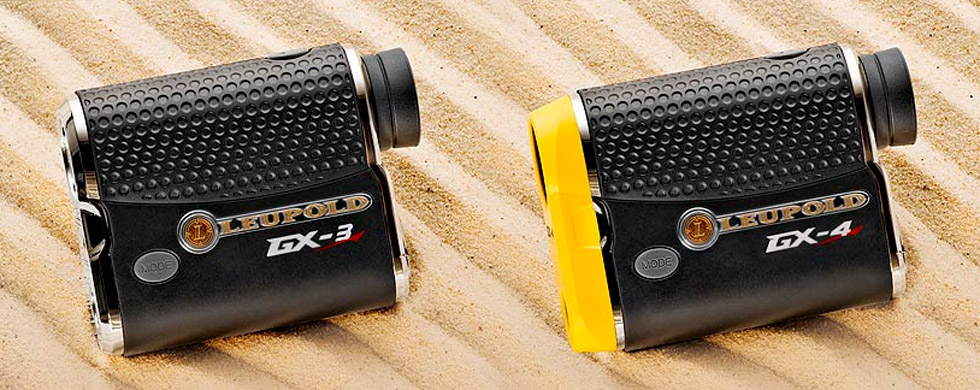
Our new GX-3 and GX-4 golf rangefinders build on the success of our GX-1 and GX-2 models. The GX-3 is extremely compact yet actually has a longer maximum ranging distance to the pin than GX-1 and GX-2. Unmatched versatility is the name of the game with GX-4. It can serve as a tournament-legal rangefinder or, with the Smart Key, be employed with the TGR and Club Selector features in casual or practice rounds to help any golfer play the right shots and improve their scores.
Andy York, VP of Sales and Marketing, Leupold
There are a number of new features common to both new models, as well as some updates that add to the robust technology already found in the GX-1 and GX-2. Have you ever gotten an early start, only to find that your readings are inconsistent due some lingering fog? The new Fog Mode was designed to combat exactly that problem, giving all four models the ability to cut through that remaining moisture and provide you with the accurate reading you’re accustomed to.
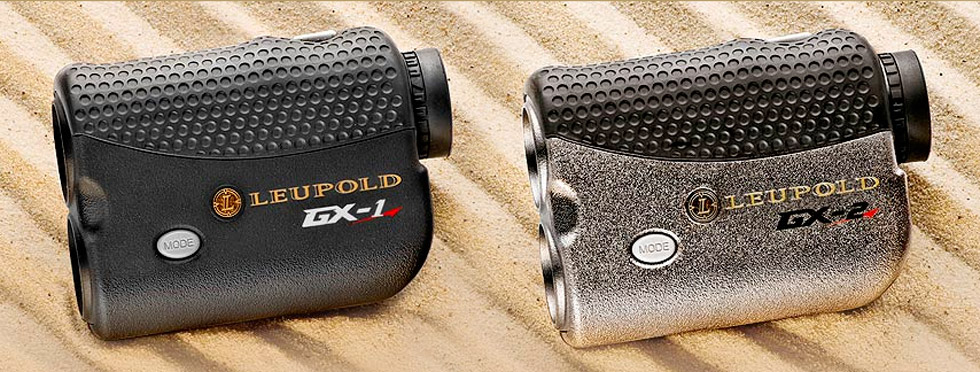
Another new key feature to all four models is the new Prism Lock Technology. Working in conjunction with specially equipped flag sticks (now found on 2200 courses in the U.S.), Prism Lock Technology notifies you with an audible beep when the special pin is detected, and eliminates the need for stability.
Even if you’re not playing a course with the previously mentioned flag sticks, it’s alright, as all new models (GX-1 and GX-2 included) have PinHunter Laser Technology, which helps to separate the pin from trees or other distracting objects behind your target. All four models also offer three different aiming reticles, giving the player the ability to choose the option that works best for them. Other options include the ability to toggle between English (yards) and Metric (meters) units.
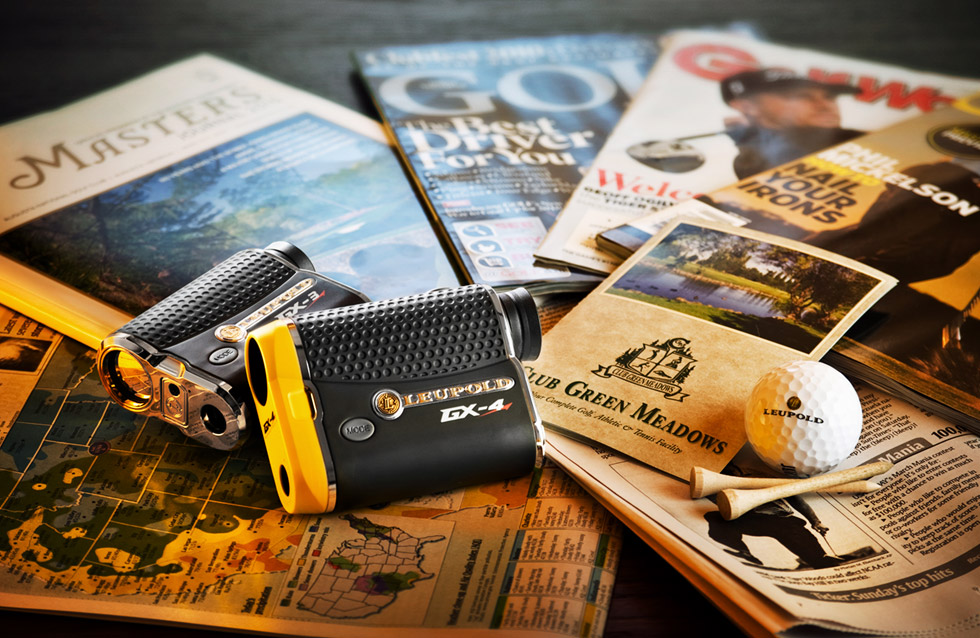
There are a number of features common to the GX-3 and GX-4 only however. Both utilize a solid aluminum body as opposed to the ruggedized plastic on the GX-1 and GX-2. Though both the GX-3 and GX-4 weigh a single ounce heavier than the other two models, the upgrade to aluminum is surely worth it. The other attractive addition is the upgrade from LCD in favor of a brighter, red OLED display.
GX-3
The Leupold GX-3 employs multi-coated, scratch-resistant lenses that not only last in the toughest conditions, but also provide crystal clear optics that are designed to last for countless rounds. To further extend the life of the unit, Leupold made the GX-3 completely weatherproof.
The compact (3.7L x 2.8H x 1.3W) unit weighs in at only 7.8 ounces for maximum portability, and is is accurate from a whopping 450 yards out, with a 6x magnification. One-touch scan mode ensures quick, simple operation. The GX-3 will be available in stores this May with a suggested retail price of $500.
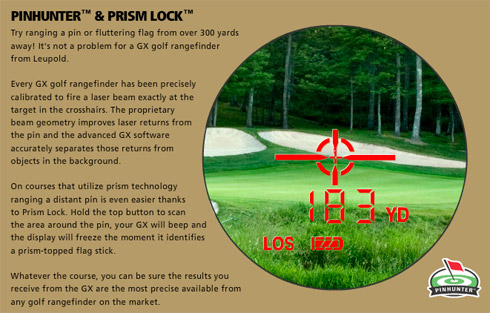
GX-4
Along with all of the functionality that makes the GX-3 a great option, the GX-4 adds a number of appealing options. Exclusive to the GX-4 (and GX-2) is True Golf Range (TGR). If you’ve ever missed a green long (or short for that matter), due to elevation differences between your ball and your target, TGR might just be the key to shaving a few strokes from your score. By taking into account factors such as incline, decline, temperature, and altitude along with the line-of-sight distance, TGR displays an adjusted “plays like” distance, giving you the information you need to make a confident club selection.
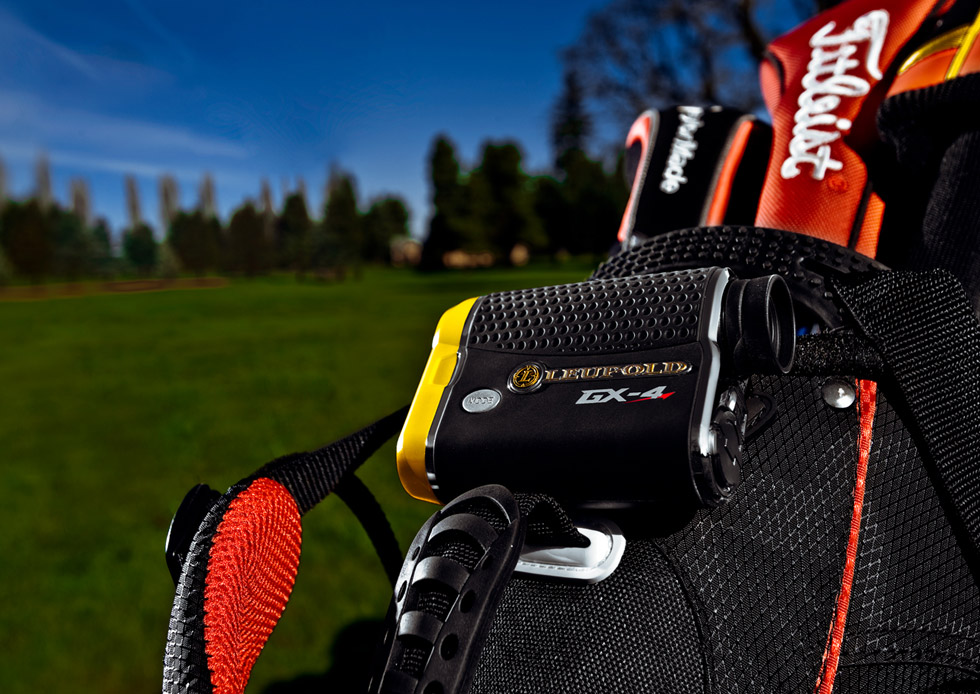
The GX-4 takes club selection one step further with the Club Selector feature. Club Selector asks you how far you hit three of your, then takes into account data obtained from TGR, and ultimately recommends the proper club for you to use. I know I could definitely use that from time to time!
The key to these features is, well, the Smart Key. The Smart Key is, in simplest terms, a specialized yellow face plate which enables functionality such as TGR and Club Selector. The standard chrome face plate turns the GX-4 back to a completely legal, line-of-sight rangefinder, and these face plates are quickly and easily interchangeable. Both ship with the GX-4.
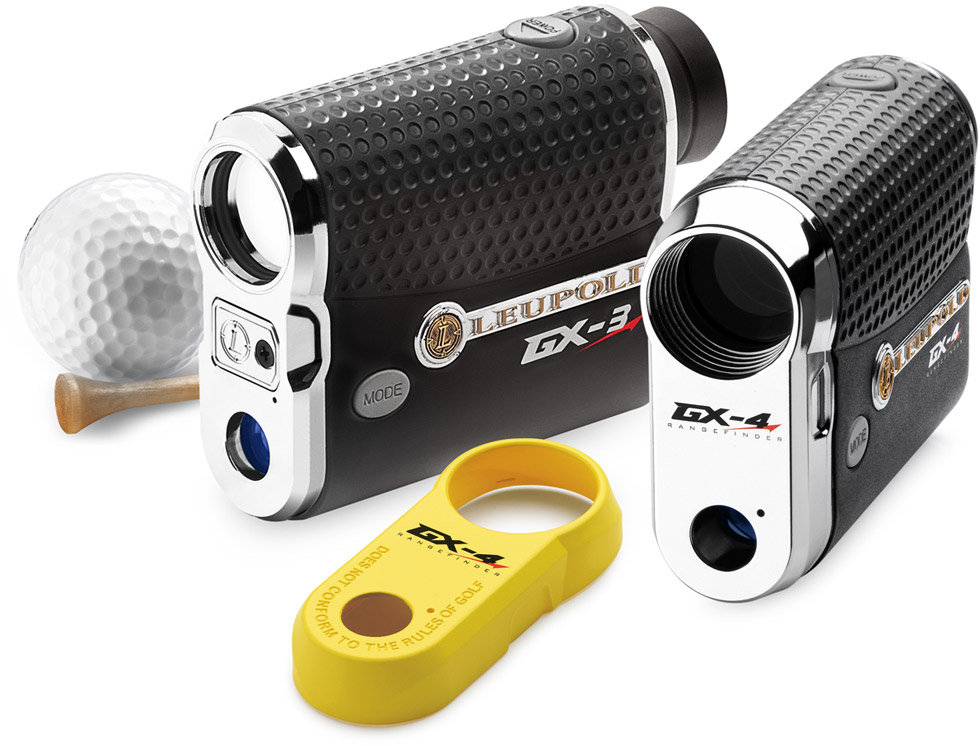
Like the GX-3, the GX-4 makes use of a multi-coated lens system for the ultimate in both clarity and durability. The 4.1L x 2.8H x 1.3W frame is compact and completely weatherproof, and can accurately acquire a pin up to 450 yards away. Included with the GX-4 is a Cordura case for easy carrying. Like the GX-3, this high-end model will be available this coming May, though the suggested retail price of the GX-4 is $625. As with most things, the actual retail price should be lower.

Does the old version of GX-1 and GX-2 have the PinSeeker Technology? As far as I could tell, the new versions got Fog Mode and Prism Lock, are there any other changes?
Is the extra weight of the smaller GX-3 model perceptible when you actually hold the model compared to the slightly larger GX-I?
Wow the new aluminum bodies look sharp! I’ve been wanting one of these for a while now, and I think it’s time for me to pull the trigger and finally get one. I think I’ll save myself the buyer’s remorse and fork over the extra 100 bucks for the sharp new look of the GX-3.
I purchased one of the old GX-1 units after reading the earlier review here but I got it from a hunting shop at about half the price of the golf-specific unit and it works brilliantly. Without the pinseeking function you can’t focus on the pin further out than about 135 yards on a still day (without a tripod) but it can be used much further away to get distance from bigger objects like trees and bunkers. Personally if I am further out than 135 yards the distance it’s largely academic anyhow, anwhere on the green is fine!
I would question the usefulness of some of the expensive features in the GX-3 & 4 models – Why pay more for a function you can’t use in competition? How many of us need to know the accurate distance from a pin 450 away? How much fog can this thing see through etc.
I also think if the author hasn’t actually used the reviewed product before writing the article he should state so, otherwise it would seem to be an advertisement not a review.
It’s not a review. The product isn’t even available yet. It’s an announcement – magazines and newspapers have this sort of article all the time.
I have purchased and played with the GX1 and GX3 in the last month May 2010. The GX1 worked brilliantly, consistantly picking up the pins with prisms, locking in and beeping despite my shaky hand at over 200 yards out. Playing courses without the prism pins is more inconvienient, and you may have to eliminate a Grey Goose martini or two from your pregame warm ups. I had my usual 3 the night before, but still managed to lock in pins at 190 by holding my breath. I then got the GX 3 in the mail and decided to return the GX1. The 3 has cool red LED display, is even smaller, (will fit in shirt pocket),and as I had hoped, a better case, with Magnetic latch instead of elastic. But for the 100 bucks extra, thats it. It doesnt out perform the GX1. But for me the size and case and extra coolness were worth it.
I have had ONE performance issue with the GX3. The lense is coated with someting that makes it look like chrome. It looks very cool, but I believe this makes the 3 harder to see through in low light. In a tournament in Saticoy CA, the GX3 locked up on 3 different holes, and would give no distance to ANYTHING. Wierd, since the pins also had prisms in the shafts just below the flag. This was towards the end of the day and on holes with heavy shadows from trees surrounding the green. Had to use my partners old Bushnell to get distance on those holes. It has done this a few times since. It may be I am pushing the button too much or in a manner to confuse the processor, or there is a glitch in my unit. After it shuts off from non use, it seems to work ok the next time you turn it on. I must be one of the first users, since these are on backorder everywhere and hard to get. Anyone else have the lock up problem?
they do ? You can’t see the aluminum. The chrome front & back covers are plastic, the tubular body under all the black cosmetics is what’s made out of aluminum. Your eyesight is like superman’s – you don’t need a range finder.
Call Leupold and they will tell you that their Golf specific models use a more sophisticated imaging system than the hunting models. You didn’t pay less – you got less.